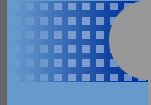|
Vinyl flooring
is one of the most affordable resilient flooring solutions available. And depending on the wear surface you choose, materials
costs can be up to 70% less than other flooring materials. Versatility, low maintenance and high durability make vinyl a popular
flooring choice.
Vinyl offers a variety of colors and patterns to match your decorating style. With proper surface preparation, it can
be installed over any standard underlayment, concrete, old ceramic tile, wood or non-cushioned vinyl flooring. Stability and
water resistance make vinyl a good choice for any room at, above or below
Low Maintenance
No-wax surfaces and easy cleanup are also advantages of vinyl flooring. Regular sweeping and occasional damp
mopping are all you need to keep your floor looking bright and new. Spills are no problem, simply wipe them away with a damp
cloth.
Aside from obvious color
and pattern variations, the biggest difference between tiles is the surface coating, or wearlayer. Tiles are covered with
one of three surface coatings to resist dirt, stains and scuff marks:
- Vinyl No-Wax is good for areas with light traffic and
minimal exposure to dirt.
- Urethane is good for areas with normal
to heavy traffic. Urethane resists scuff marks, scratches from sliding chairs and cleans up easily.
- Enhanced Urethane is considered the highest quality surface coating.
Enhanced urethane holds up to the heaviest traffic, offers the greatest stain and scratch resistance and maintains its original
luster longer than other coatings.
Types of Vinyl Flooring
There
are two types of vinyl flooring: inlaid and printed.
Inlaid vinyl imbeds color granules into the vinyl sheet for a richer finish. Colors
are an integral part of the floor.
Printed vinyl is produced much like a magazine
page. Colored inks are printed onto the
flooring sheets.
Backing
The backing is the final element of a vinyl floor, providing additional moisture and mildew resistance. Backing
also provides the resilience that vinyl is noted for and determines the type of adhesive required for installation. In general,
a thicker floor is a better floor.
Installation
Most sheet vinyl flooring has a pattern resembling tile which
looks like it has a grout line along which the seams can be successfully done almost invisibly. Some flooring which does not
have these grout lines often comes in 12 foot widths in order to be installed seamlessly, depending on the size of the room.
One should avoid choosing one of these patterns for a large room where it cannot be installed without a seam.
Top
|

